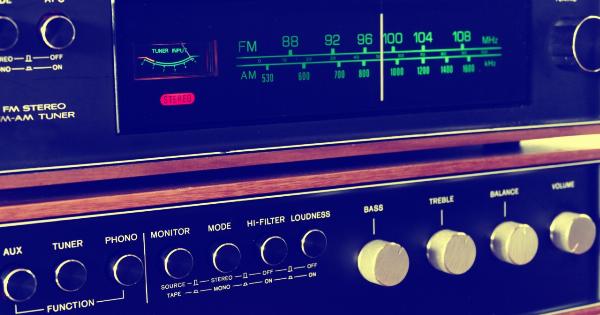Bladder issues are quite common among women, and unfortunately, there are very limited treatment options available.
Urinary incontinence, urgency, and frequency are some of the most common bladder disorders that affect approximately one-third of all women. It’s a chronic condition that interferes with their active lifestyle, causing them embarrassment, emotional distress, and negative impacts on their quality of life.
The bladder is a hollow, muscular organ located in the lower abdomen that stores urine before it’s eliminated from the body through urethra opening. The bladder’s position is supported by pelvic floor muscles, including the coccyx bone.
However, due to a variety of reasons like childbirth, aging, menopause, or surgery, pelvic muscles weaken, leading to distorted shape and placement of the bladder. This results in the loss of bladder control, leading to incontinence or urgency.
What is Radio Frequency therapy?
Radiofrequency (RF) therapy is a minimally invasive treatment that uses energy waves to address various medical conditions.
In this treatment, high-frequency energy waves are directed at the target area to stimulate healing by generating heat and structural changes. It’s a relatively safe and effective treatment that can be done in a doctor’s office, without the need for anesthesia or hospitalization.
The RF therapy aims to stimulate tissue regeneration by increasing blood flow, collagen production, and boosting immune function. The treatment delivers radio waves through a needle-like device inserted into the target area.
The RF waves create a thermal effect, raising the temperature in the treatment area, which leads to the breakdown of collagen fibers, resulting in scar tissue formation. The thermal effect causes collagen shrinkage, making the tissue firm and tight, leading to tissue remodeling, renewal, and repair.
How Bladder coccyx Radio Frequency therapy works?
Bladder coccyx Radio Frequency therapy is a non-surgical treatment that targets the coccyx bone, and the pelvic floor muscles supporting the bladder.
The procedure uses radio waves delivered through a needle-like device, which is inserted into the target area. The radio waves penetrate the tissue, creating a heating effect, which results in the tightening of the pelvic muscles, including those supporting the bladder.
The bladder’s support structure, including the ligaments and muscles, gets weakened over time due to a variety of reasons like childbirth, surgery, menopause, or aging.
This results in the bladder’s anatomical changes, leading to incontinence or urinary urgency and frequency. Bladder coccyx Radio Frequency therapy helps reverse these changes by tightening the pelvic muscles, thus providing better support to the bladder.
What to expect during Bladder Coccyx Radio Frequency therapy?
The Bladder Coccyx Radio Frequency therapy is a quick procedure that typically takes 20 to 30 minutes to complete. The treatment is done in a doctor’s office, and the patient doesn’t need any anesthesia or hospitalization.
The doctor will start by numbing the insertion site with a local anesthetic. They’ll then use a needle-like device to deliver radio waves directly into the target area. These radio waves generate heat, which tightens and strengthens the pelvic muscles, including the ones supporting the bladder.
The patient can expect a mild warm sensation during the procedure, which is usually not painful. After the treatment is completed, the doctor will clean the area and apply a bandage.
The patient can resume their regular activities immediately following the procedure. However, the patient needs to avoid strenuous activities like exercise or heavy lifting for a few days after the treatment to allow the treatment area to heal.
What are the benefits of Bladder coccyx Radio Frequency therapy?
There are several benefits of Bladder coccyx Radio Frequency therapy, including:.
- Non-surgical – The procedure is non-invasive and doesn’t require any surgery, anesthesia, or hospitalization.
- Quick Procedure – The procedure takes around 20-30 minutes to complete in a doctor’s office. The patient can resume their regular activities right away.
- Minimal discomfort – The patient may feel mild discomfort or warmth during the procedure, but it’s not painful.
- Effective – The treatment tightens and strengthens the pelvic muscles supporting the bladder, leading to better bladder control and improved quality of life.
- Safe – Bladder coccyx Radio Frequency therapy is a safe and effective procedure with minimal side effects and risks.
Who is the ideal candidate for Bladder coccyx Radio Frequency therapy?
The ideal candidate for Bladder coccyx Radio Frequency therapy includes women experiencing mild to moderate incontinence, urgency, and frequency issues, not responding to other forms of treatments like medications, pelvic floor exercises, or bladder training. Women who are pregnant or breastfeeding are not suitable candidates for Bladder coccyx Radio Frequency therapy.
Additionally, women with an implanted pacemaker or any implanted metal devices in their lower abdomen are not suitable candidates for Bladder coccyx Radio Frequency therapy.
The doctor should perform a thorough evaluation and discuss all the risks and benefits before recommending Bladder coccyx Radio Frequency therapy as a treatment option.
What are the side effects of Bladder coccyx Radio Frequency therapy?
The Bladder coccyx Radio Frequency therapy is a safe and effective treatment with minimal side effects. However, some patients may experience mild discomfort, warmth, or redness at the treatment site.
These side effects usually resolve within a few days and don’t require any medical intervention. Rarely, patients may experience bleeding, infection, or nerve damage.
Conclusion
Bladder coccyx Radio Frequency therapy is a safe and effective treatment option for women suffering from incontinence, urgency, or frequency issues.
It’s a minimally invasive procedure that doesn’t require anesthesia or hospitalization and can be performed in a doctor’s office. The treatment uses radio waves to generate heat, which stimulates the formation of scar tissue, leading to tightness and firmness of the pelvic muscles supporting the bladder.
The treatment takes around 20-30 minutes, and the patient can resume their regular activities immediately following the procedure. The treatment is safe, effective, and has minimal side effects. Women who are pregnant, breastfeeding, have an implanted pacemaker, or any implanted metal devices are not suitable candidates for the treatment.
The patient needs to discuss all the risks and benefits with a doctor before considering Bladder coccyx Radio Frequency therapy as a treatment option.































